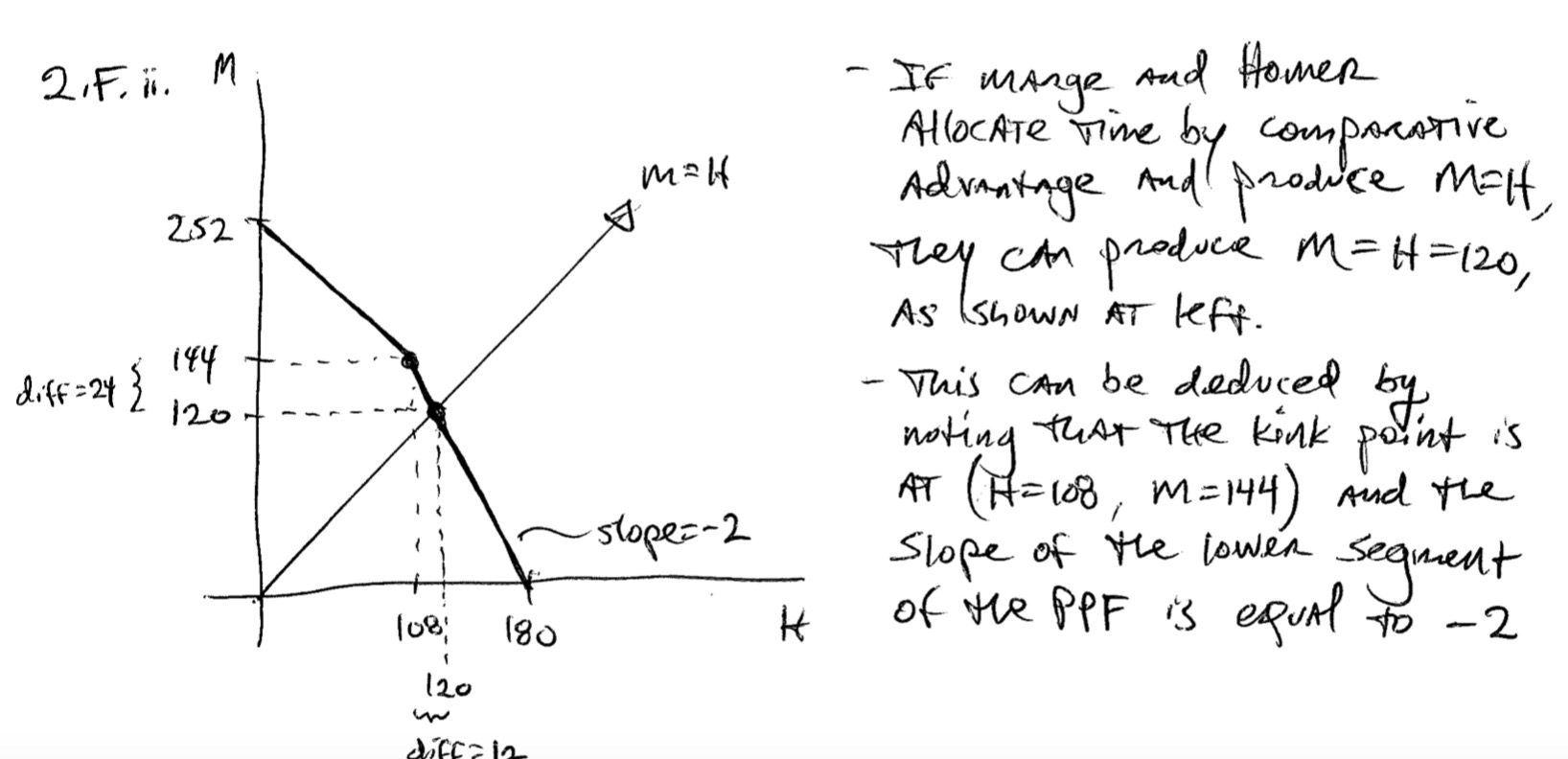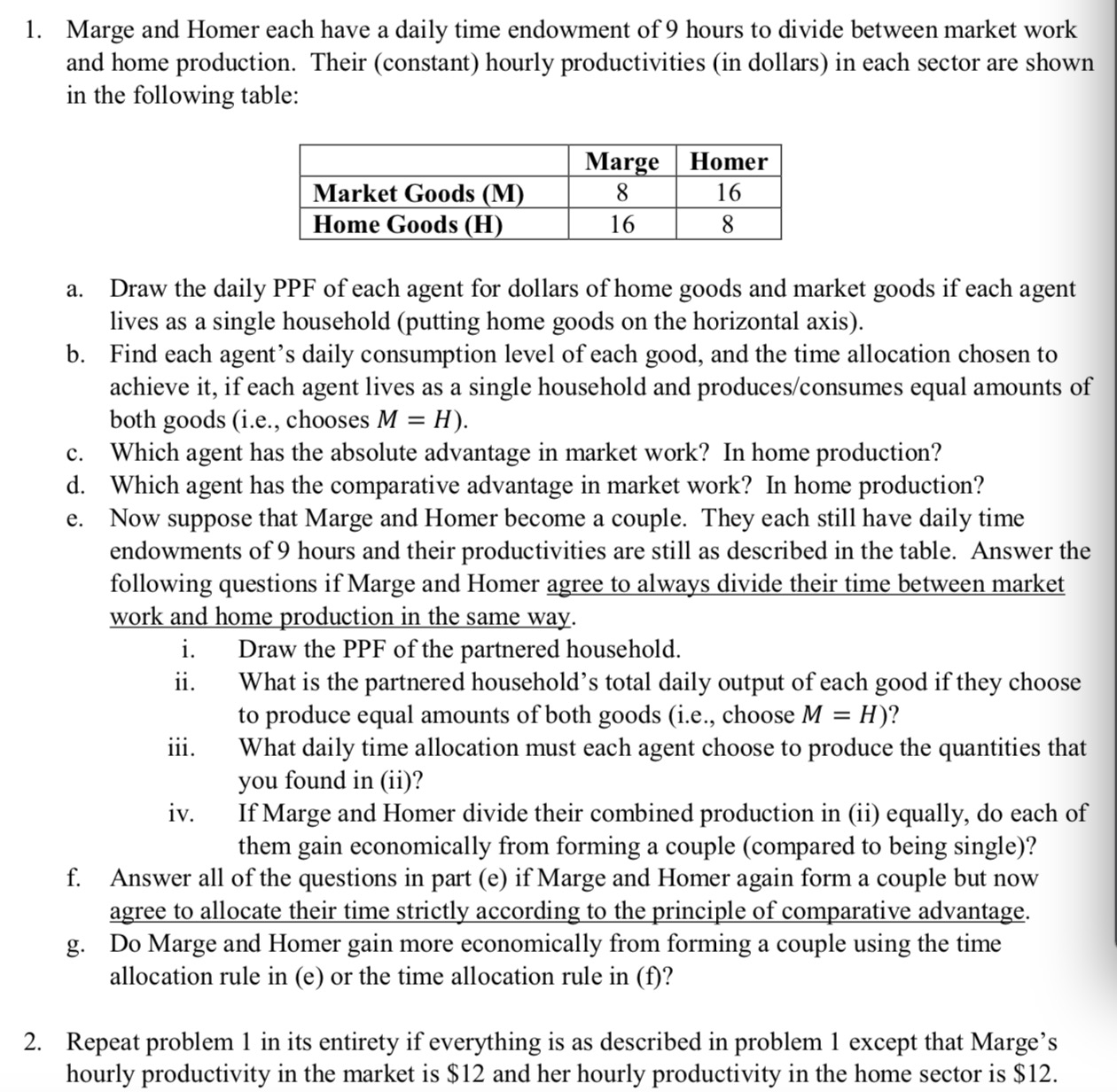2.F. ii. M - IF marge And Homer Allocate vime by comparative Advantage And! produce MEH 252 They can produce M= 4= 120, As Shown AT left. diff = 24 2 144 - 120 # - - - This can be deduced by noting that The kink point is AT (H= 108, M = 144 ) And the stopes - 2 Slope of the lower segment 180 of the PPF is equal to - 2 120 difc- inMarge and Homer each have a daily time endowment of 9 hours to divide between market work and home production. Their (constant) hourly productivities (in dollars) in each sector are shown in the following table: Market Goods \"n Home Goods H \"I. a. Draw the daily PPF of each agent for dollars of home goods and market goods if each agent lives as a single household (putting home goods on the horizontal axis). b. Find each agent's daily consumption level of each good, and the time allocation chosen to achieve it, if each agent lives as a single household and produces/consumes equal amounts of both goods (i.e., chooses M = H). Which agent has the absolute advantage in market work? In home production? (1. Which agent has the comparative advantage in market work? In home production? e. Now suppose that Marge and Homer become a couple. They each still have daily time endowments of 9 hours and their productivities are still as described in the table. Answer the following questions if Marge and Homer agree to always divide their time between market work and home production in the same way. i. Draw the PPF of the partnered household. ii. What is the partnered household's total daily output of each good if they choose to produce equal amounts of both goods (i.e., choose M = H)? iii. What daily time allocation must each agent choose to produce the quantities that you found in (ii)? iv. If Marge and Homer divide their combined production in (ii) equally, do each of them gain economically from forming a couple (compared to being single)? f. Answer all of the questions in part (e) if Marge and Homer again form a couple but now agree to allocate their time strictly according to the principle of comparative advantage. g. Do Marge and Homer gain more economically from forming a couple using the time allocation rule in (e) or the time allocation rule in (t)? 9 Repeat problem 1 in its entirety if everything is as described in problem 1 except that Marge's hourly productivity in the market is $12 and her hourly productivity in the home sector is $ 12








